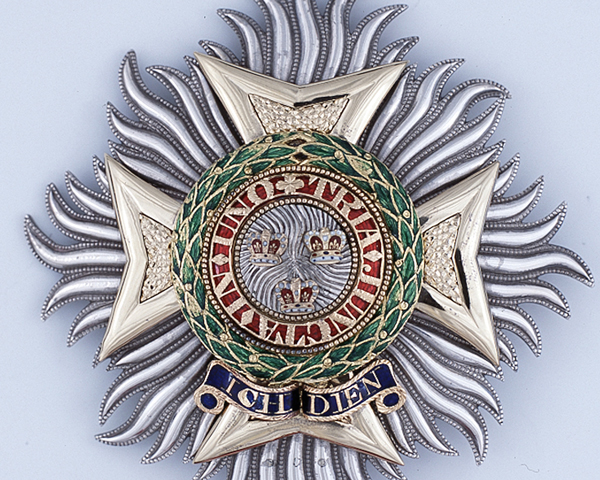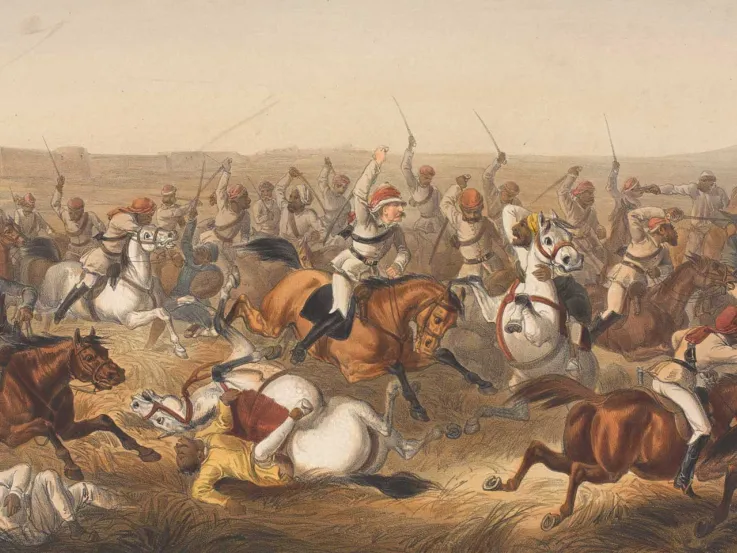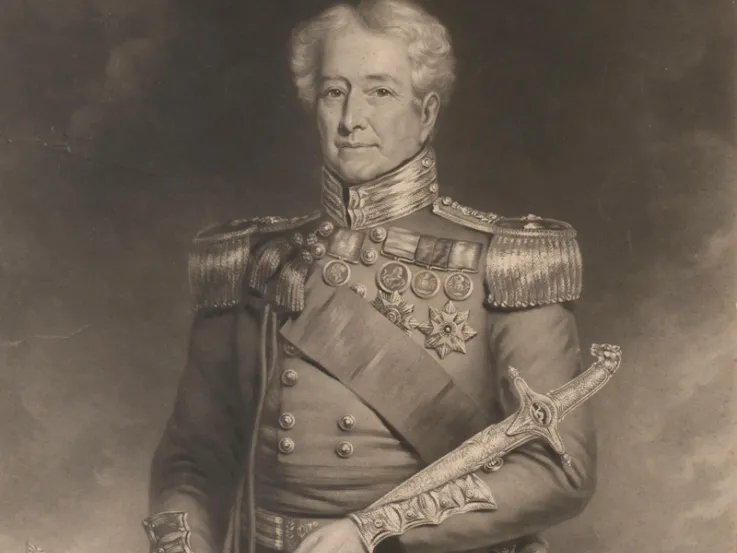Explore more from Great Commanders
Colin Campbell: A soldier of coolness and precision
Related topics
Lieutenant-General Sir Colin Campbell at the Relief of Lucknow, 1857

Early career
Colin Campbell (1792-1863) was commissioned into the 9th (East Norfolk) Regiment of Foot in 1808. He performed distinguished service during the Peninsular War (1808-14), being present at Vimeiro (1808), Corunna (1809) and Vitoria (1813), and was wounded leading the 'forlorn hope' during the storming of San Sebastian (1813).
The Battle of Vitoria, 1813
The Battle of Chilianwala, 1849
China and India
The son of a Glasgow carpenter, Campbell's rise to high command was slow. By 1837, he was lieutenant-colonel of the 98th Regiment, which he commanded during the First China War (1842). He then went to India as a brigadier-general in 1846.
Campbell remained in India until 1853. During his time there, he gained distinction in the Second Sikh War (1848-49) and was wounded at the Battle of Chilianwala (1849). He was made a Knight Commander of the Order of the Bath in 1849, and specially named in the thanks of Parliament.
The Thin Red Line, 1854

Crimea
Promoted to major-general in June 1854, it was his service in the Crimean War (1854-56) that brought him to public attention and finally made his reputation.
Campbell commanded the Highland Brigade with notable success at the Battle of the Alma (1854). And at Balaklava (1854), his 'thin red line' of Highlanders repulsed the Russian cavalry assault.
Later in the campaign, Campbell took over command of the 1st Division from the Duke of Cambridge. He also did his best to improve the comfort of his men during the bitter Crimean winter. He was promoted to Knight Grand Cross of the Bath in July 1855.
‘There is no retreat from here, men. You must die where you stand.’
Major-General Sir Colin Campbell to his troops at Balaklava - 1854
General Sir Colin Campbell, c1855
Order of the Bath, Star of a Knight Grand Cross awarded to Major-General Sir Colin Campbell, 1855
Return to India
When news of the Indian Mutiny (1857-59) reached England in July 1857, the Prime Minister, Lord Palmerston, offered Campbell the position of Commander-in-Chief of India in place of General George Anson, who had just died. He left the following day, arriving in Calcutta in August.
The ruined front of the Lucknow Residency, 1858
Storming the Secundra Bagh, Lucknow, 16 November 1857
Relief of Lucknow
Having organised his troops and cleared Lower Bengal of mutineers, Campbell advanced on 9 November with 4,500 men to relieve the besieged garrison at Lucknow.
On 14 November, the Dilkusha Palace was stormed, and two days later the relief force broke through the rebel lines. The men, women and children besieged at the Residency were evacuated to Cawnpore on 22 November.
Pursuit of the Gwalior Contingent by Sir Colin Campbell at Cawnpore, December 1857

Capture of Lucknow
After defeating Tantya Tope at Cawnpore in December 1857, Campbell returned to Lucknow the following March for the final capture of the city.
He attacked in set-piece fashion, moving forward from position to position, after his engineers had constructed bridges across the Gumti River. La Martiniere was captured on 9 March and two days later the Secundra Bagh and the Shah Najaf mosque fell.
The Begum Kothi palace complex was a tougher nut to crack. Severe hand-to-hand fighting led to over 700 rebel deaths. Over the next three days, Campbell's gunners blasted their way through the buildings between the Begum Kothi and the rebel posts in the Kaisar Bagh - the Nawab of Oudh's palace - which was captured on 14 March.
Soldiers outside La Martiniere, Lucknow, 1858
Lieutenant-General Sir Colin Campbell's field glasses, 1858
National recognition
Perhaps Campbell's main achievement during the rising was the way he organised the various campaigns that systematically cleared the rebels from each region. However, during these operations his men committed many indiscriminate reprisals against Indians in response to the mutineers earlier massacres of Europeans and Christians.
For his services in the conflict he was ennobled as Lord Clyde in 1858. After returning home the following year, Campbell received the thanks of both Houses of Parliament and a pension of £2,000 a year. In 1862, he was promoted to field marshal.
Campbell (right) and his Chief of Staff, Major-General William Mansfield, 1858
A prudent commander
Campbell was criticised by some of his contemporaries. They nicknamed him 'Sir Crawling Camel', disliking his safety-first approach to battles. On the other hand, an official dispatch praised his 'steady coolness and military precision'.
While he may have lacked the dash and spontaneity of some other commanders, Campbell's concern for his men and his prudent desire to keep casualties to a minimum meant that he was much loved by his soldiers. Throughout his career he always stressed the importance of their physical conditioning and mental well-being.
Bust of Lieutenant-General Colin Campbell KCB, 1858
Field marshal's baton of Lord Clyde, 1862
























